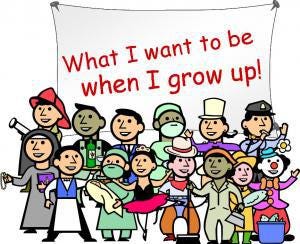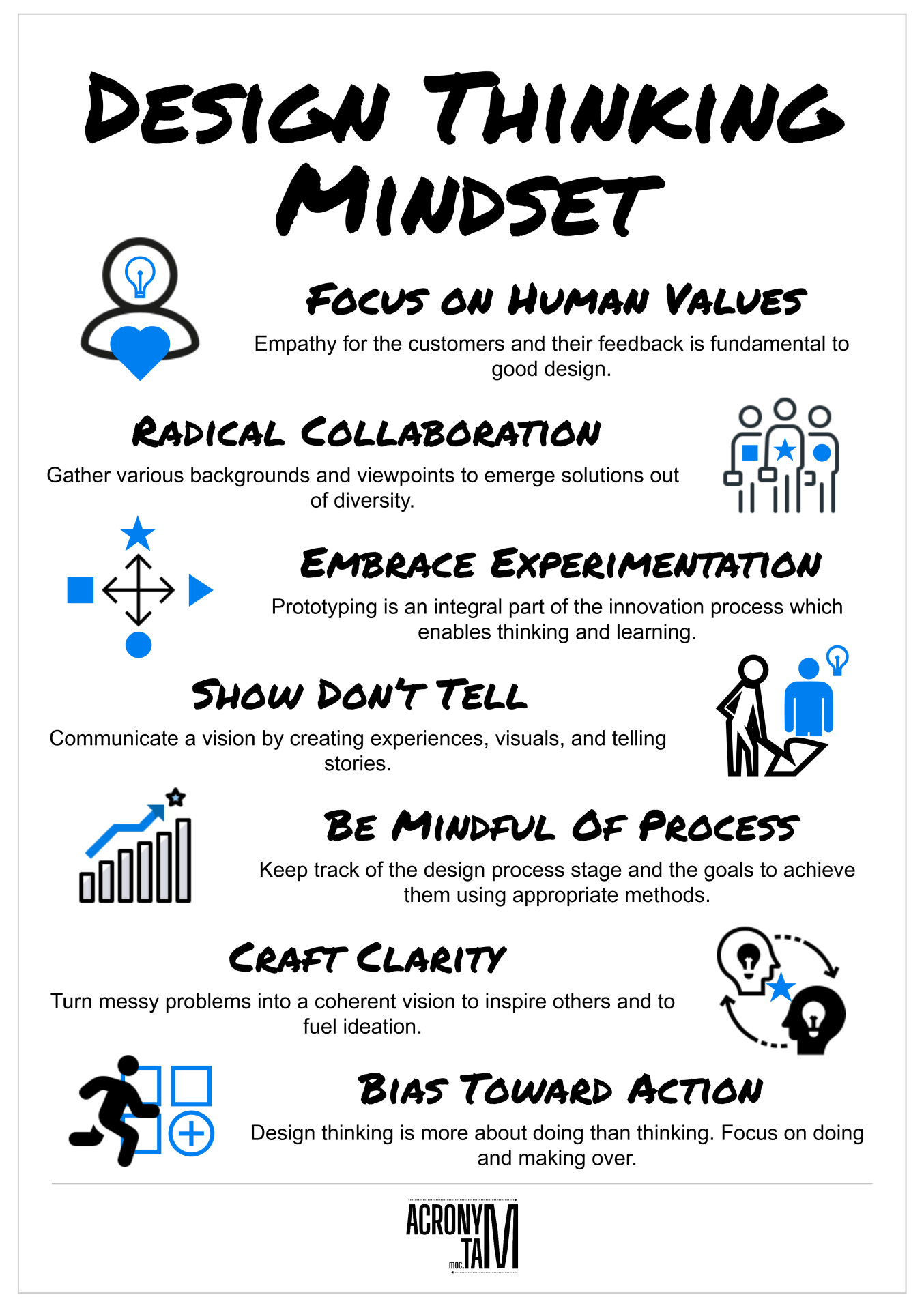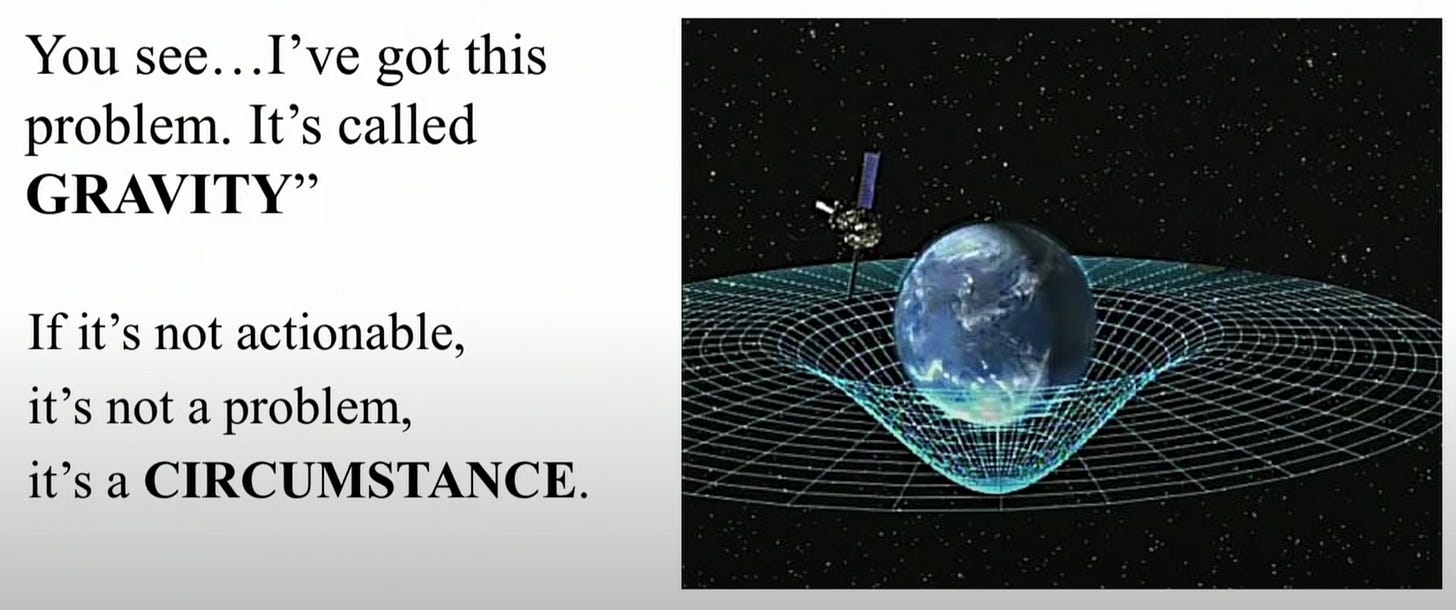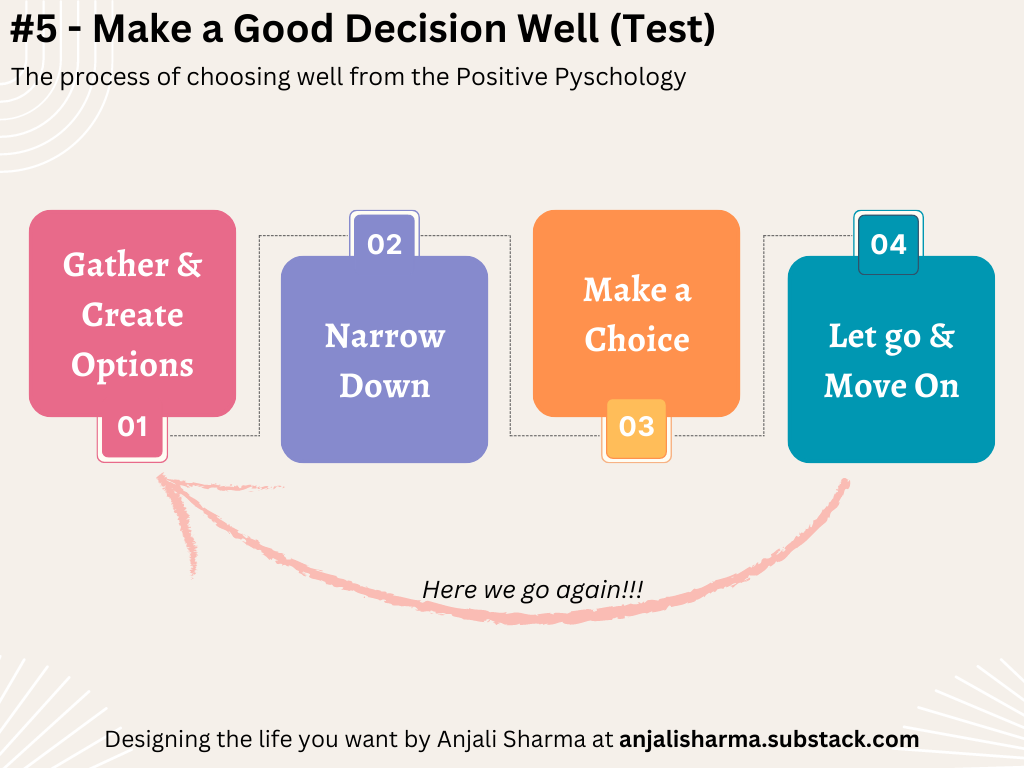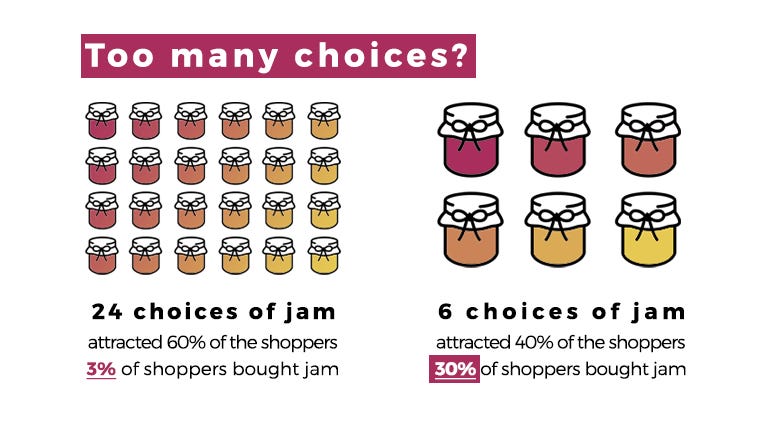How to design the life you want?
Stanford's Design Thinking School methodology in 5 simple steps
What do you want to be when you grow up? I am sure we all have answered this question at some point in our childhood and for me, the answer changed every time someone asked me this question but it’s not just me.
Trade school has done a detailed study on childhood aspirations that has revealed that only 21% of people actually become what they wanted to be a child. More interestingly, the answer changes drastically as a person grows up.
Basis these facts, if my choices are constantly changing, how will I ever know what I want to be?
Well, that’s a great question.
Bill Burnett and Dave Evans founded the Life Designs Lab at Standford University and have written a book Designing your life to answer this question using design thinking methodology in 5 simple steps.
What is design thinking?
Design Thinking is an innovative methodology for practical and creative problem-solving. It is a non-linear iterative 5 step process in which you seek to understand your users, challenge assumptions, redefine problems, and create innovative solutions which you can prototype and test.
It works on all products and services but what's more important and interesting than learning the design thinking process by designing our life?
How to design the life you want using design thinking?
When starting to do something new and interesting, especially in the design thinking process, there is a set of mindsets you need to adopt to get the best results as mentioned below:
Once you are ready with the right mindset (and I hope you do this pretty quick xD), here’s what the process of designing the life you want looks like…
Step 1 - Connect the Dots (Empathy)
The first step starts from where you are right now. Before getting into the design you want, you need to understand the present state of your life otherwise how will you know you’re designing it for better or worse?
In simple words, you need to build a coherent story between who you are, what you do, and what you believe in the present moment to create a picture of the actual meaning (or state) of your life
Take a piece of paper and write about 250 words on each of the questions mentioned above in the meaning-making process for each section. Once you are done, you’ll have a better idea of who you are as a person and why you’re doing what you’re doing, and most importantly, you’ll know which area needs the most improvement.
The increase in meaning-making comes from connecting the dots.
Step 2 - Focus on your circle of control (Define)
Dave Evan says, “You can’t solve a problem you’re not willing to have.” Bill Burnett has coined this category under gravity problems - something you cannot change.
Once you’ve identified that something is a gravity problem, you have to accept and move on to find a problem that you can work on to get the best results.
So, define your problem statement well by focusing on your circle of control, as also mentioned by Steven R. Covey in his famous book, The Seven Habits of Highly Effective People.
Step 3 - Hopping through the Metaverse (Ideate)
If you can be anything in the world, what would you be?
That’s another great question but in the process of design thinking, creating options and ideating on those options is the best possible way to get through the best results.
In the program and the book, Bill Burnett has asked his students to hop through the metaverse and live all the possible lives parallelly to classify them into three buckets.
In simple words, ideate 3 alternate futures with a 5-year wild quest because you are more than one thing and there is more than one of you in all those universes. Also, focus on the questions in each of your universes.
With this, you’re actually asking your mind to think BIG and think beyond your regular life with all the limitations and circumstances.
Step 4 - Interaction with Reality (Prototype)
After envisioning all of your wild futures in the metaverse, jumping directly to reality to make it happen is always a bad idea and hence you have to ask yourself, “What would it be like if I tried this?”
Here’s where you have to expose your assumptions on whether is this something you really wanna do or is this something you’re doing because you were interested in it when you were 15 years old.
You’ll find your answers when you sneak up through the future while interacting with your metaverses with reality through prototyping.
There are two major types of prototyping:
Prototype Conversions - Find people who are already living the life you have envisioned and ask for their stories (and most people are ready to share their stories if you buy them a cup of coffee).
Pay attention to your narrative resonance while listening to their stories. If after listening to their stories, something in yourself rings up and charges you well, congratulations you’re on the right track. If not, you might want to go back to step 3 and ideate for more ideas.
Prototype Experiences - Find opportunities to experience the feeling of doing what you want to do in the future as a part-time activity. If you wanna be an athlete or dancer or photographer, take time on weekends to prototype the experience of being a full-time athlete or whatever you choose to be.
Feel the experience of doing in the now and carefully note down the feedback your body and your emotions are giving you to understand how to move ahead.
Step 5 - Make a good decision well (Test)
So after going through each of the steps, how will you know that you’ve made the right choice? Honestly, this is my favorite question.
There’s a four-step process for Choosing well:
Gather and Create Options - this is the step where you have to explore as many options as you can. You also need to make sure that you leave room for those extraordinary lucky ideas.
Increase your luck surface area by paying attention to what you are doing and keeping your peripheral vision open to attract opportunities because as William Gibson says, “The future is already here. It’s just unevenly distributed.”
Narrow Down - If you have too many choices, you’ll get into the trap of choice overload which will result in essentially no good choices in the end.
The famous Jam study at Standford has excellently portrayed the theory of choice overload. When a shopkeeper increased the variety of Jams from 6 jams to 24 jams, twice as many people stopped by but the conversion of sales dropped from 30% to 3% as customers were not happy with any of the jams with a lot of options.
When you have too many options, you are actually having no tangible option to work on!
Ohh, what if I’ll cross off the right options while narrowing down?
Well, you might but how will you know until you try it?
You will never know how you feel about the decision until the decision is made.
So, just take the leap of faith and narrow down the options to 3 or 5. If you want to restructure your list at a later stage, you can always go back to gather and create more options!
Make a Choice - This is the most important step in the process.
You cannot choose well if you choose only from your rational mind. You need to listen to your emotional intelligence also called your “gut feeling”.
Paying attention to your emotions while making a decision works best as a feedback mechanism to help you understand if you have made the right decision or not.
Let Go and Move On - This step increases your chances to be happy with the decision you’ve made.
Dan Gilbert, a Harvard psychologist and the author of Stumbling on Happiness has conducted an experiment on relating choices with happiness.
In the study, you were asked to choose one postcard that you like the most out of the 5 cards on the table. Group A was asked to keep their chosen card with them to take it home and don’t bring it back. Group B was asked to do the same thing with one additional condition if they don’t like the chosen card, they can come back later next week to get it replaced with some other card.
The results?
The people who were allowed to change their minds did not like their own cards one week later. Surprisingly, they did not like any of the other postcards anymore. They even did not like the whole experimental process and they destroyed their opportunity to be happy.
On the other hand, Group A people still loved their cards and some of them even decorated the card in their bedrooms.
If you make decisions reversible, your chance of being happy goes down to 60-70%
So, once the decision has been made, let go and move on. Make the decision irreversible so as to increase your chances of being happy!
Conclusion
Designing the life you have ever wanted consists of 5 simple steps of design thinking - connecting the dots(empathy), focusing on your circle of control(define), hopping the metaverse(ideate), interacting with reality(prototype), and choosing well(test).
I hope this article will help you design your own life. In a nutshell - get curious, talk to people, try out stuff, and do not forget to have fun in the process!
Feel free to reach out to me on LinkedIn or Twitter to share your feedback.
Love, Anjali <3




